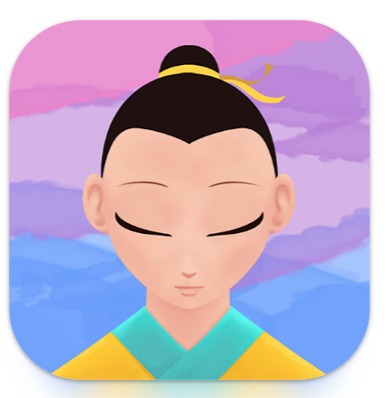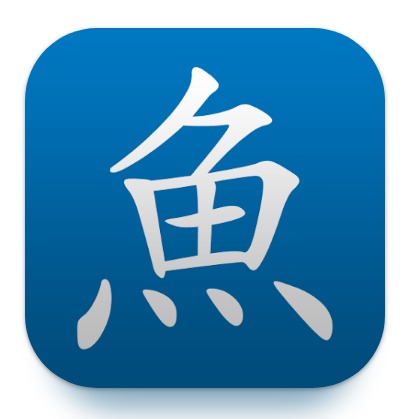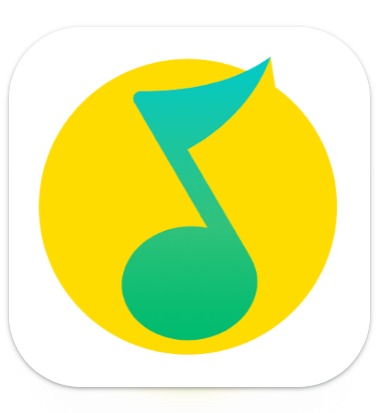7 Best Apps to Learn Chinese for Beginners
January 27, 2023
If you’re considering or have already decided to learn Chinese, Chinese apps can supercharge your Chinese learning journey. They can help you develop all aspects of your Chinese, whether it’s your Chinese speaking, listening, reading, or writing.
In this article, I’d like to share with you my top 7 apps for learning Chinese as a beginner. While a good chunk of the list is made of Chinese learning apps such as Chinese dictionaries or Chinese reading apps, a smaller portion consists of non-educational popular Chinese apps that can also boost your Chinese.
Without further ado, let’s dive in!
ChineseSkill
Skritter
M Mandarin 漫中文
Pleco
QQMusic
Will I need all the apps mentioned above?
How do I choose the best Chinese learning app for me?
Can I learn Chinese only from apps?
What about Chinese classes, what do you recommend?
Are there also some good websites for learning Chinese?
Conclusion
1. HelloChinese
HelloChinese is the most comprehensive app for beginners to kickstart their Chinese learning journey. This app boasts over 200 lessons to help beginners build a strong foundation in Chinese speaking, reading, listening, and writing, with a stronger focus on speaking. HelloChinese covers enough content that could potentially take beginner-level Chinese learners to a conversational level of Chinese (HSK 3-4).
The lessons typically involve vocabulary training, grammar lessons, character writing training, and pronunciation practice. There is a lot to like in this app. Not only do the vocabulary exercises contain short clips of real native Chinese speakers instead of the usual robotic-sounding audio tracks, but also the podcast-style lessons are extremely helpful in understanding how to use certain words in a real-life context.
What’s more, users can record their speech during the speaking exercises and receive feedback on their pronunciation, and the role-play exercises are a good way to practice conversations. Other useful features include graded stories to practice reading in Chinese and immersive lessons where users can learn some practical Chinese phrases to use in everyday life.
Despite being well-designed and user-friendly, the app could use several improvements. Firstly, the grammar points are tied to a specific flashcard, and when you miss them, there’s no way to return to the previous page without leaving the lesson. Furthermore, HelloChinese does not teach either pinyin and Chinese pronunciation rules or Chinese radical and Chinese characters stroke order rules which are essential when learning Chinese.
-
Price: Free with optional subscription starting at USD 8.99
Available on: Google Play | Apple Store
Best for: Chinese speaking

2. ChineseSkill
ChineseSkill is another great beginner-focused Chinese learning app. The app consists of over 500 vocabulary and grammar lessons with listening, reading, speaking, and writing exercises with topics ranging from basic greetings to travel and business.I particularly like the pronunciation lessons as they teach the basics of Chinese pinyin and Chinese tones. The app also comes with a very handy Travel Phrasebook. On a technical note, ChineseSkill is also more user-friendly than HelloChinese since it gives users access to the grammar points throughout the exercises.
Still, it’s far from perfect. The loading times can be slow, and the pronunciation feedback isn’t always reliable. In fact, I still got a 10/10 at times when I tried to purposefully get my tones wrong.
Also, the character drills fail to teach the systematic formation of Chinese characters. In my opinion, the next app, Skritter, would be a better alternative for learning to write Chinese characters.
-
Price: Free with optional subscription starting at USD 12.99
Available on: Google Play | Apple Store
Best for: Chinese pronunciation

3. Skritter
Skritter shines a light on the most overlooked aspect of the Chinese language: Chinese characters. It is designed to teach beginners and advanced Chinese learners alike how to write Chinese characters. It does so by introducing users to new vocabulary through a spaced repetition system while teaching them proper stroke order using handwriting recognition technology.
The lessons are divided into decks, and each deck includes a video lesson, vocabulary training flashcards, and a test. Some of the vocabulary lists were taken from HSK prep textbooks, YCT textbooks, and Chinese reading resources, whereas others were curated by the Skritter team. Users can also make their own word decks.
A large portion of the library covers common beginner-friendly topics such as greetings, culture, food and drink, or counting, along with beginner-level grammar lessons. Additionally, Skritter does a wonderful job of teaching the fundamentals of Chinese character formation. Some of the decks involve an introduction to the most common radicals, the stroke names, and the stroke order rules. There’s even an entire course about the origins and evolution of Chinese characters.
As far as I’m concerned, Skritter is probably the best app for beginners to learn to write Chinese characters, albeit a bit slow and not so user-friendly.
-
Price: Free with optional subscription starting at USD 14.99
Available on: Google Play | Apple Store
Best for: Chinese writing

4. M Mandarin 漫中文
M Mandarin 漫中文 is a manga-style Chinese reading app. The lessons are largely HSK-based, but their non-HSK content is also quite generous.At first glance, the app is visually appealing and well-organized. The reading materials can be browsed either according to their respective category, from HSK 1 to HSK 6, to non-HSK or by topic. The lessons contain beautiful graphics paired with a carefully crafted script and thoroughly-explained grammar points. On top of standard language tools such as text-to-speech technology and a dictionary, users can also look up grammatical details during their reading practice. If you’re not a fan of manga, you may also skip to the lesson transcript if you just prefer to read the text.
Although M Mandarin is a Chinese reading app at its core, it also offers several functions for improving other aspects of Chinese proficiency. Users can practice their Chinese speaking and pronunciation by dubbing the comics, train their listening skills through the mini radio podcast, and even practice writing Chinese characters. Some other useful elements include the pinyin chart and the daily phrase library.
That said, there are a few issues with M Mandarin. First of all, some lessons are mislabeled with the wrong HSK level which can be confusing. I’ve also noticed that some stories have been left incomplete with no news of future updates. Finally, the lessons are not followed by reading comprehension exercises, which would be massively beneficial to the users’ learning journey.
-
Price: Free with optional subscription starting at USD 5.99
Available on: Google Play | Apple Store
Best for: Chinese reading

5. Pleco
Pleco claims to be the “ultimate Chinese learning companion” and I couldn’t agree more. More than your typical, run-of-the-mill dictionary, Pleco also comes with plenty of useful features such as a document reader and flashcards. It is safe to say that Pleco is a must-have for anyone who is learning Chinese, especially beginners.I particularly like that users have FIVE options to choose from when looking up words: using pinyin, typing Chinese Hanzi, handwriting Chinese characters, looking up English words, or using audio input. Each dictionary search result is packed with all the information you would possibly need to know on that specific word, from meaning variations to stroke order and radicals, to word pairs and sentence examples.
Dictionary entries can also be easily added to a flashcard deck so that you can quickly go back to it again whenever you want to. The OCR reader can be used in different ways as well, be it to translate text from your clipboard, on your screen, on a still image, or a live image. To top it all off, most of these features are available offline.
As great as Pleco is, I noticed that the dictionary does not always sort the search results from the most to the least commonly used Chinese words when looking up an English word.
-
Price: Free with optional subscription starting at USD 4.99
Available on: Google Play | Apple Store
Best: Chinese dictionary

6. QQmusic
QQmusic is the one of most popular music streaming services in China. Although it’s not a Chinese learning app in itself, you still can use it to improve your Chinese listening skills by listening to Chinese music.QQmusic is very similar to Spotify, and offers various music genres such as rap, rock, pop, and classical music as well as podcasts and audiobooks. Chinese learners can kill two birds with one stone by listening to the contents while looking at either the song lyrics or the audiobook and podcast transcript.
Alternatively, you can play the music in the background when doing other tasks.
It goes without saying that beginners will unlikely understand anything they hear on the app, but it remains a great way to increase exposure to the Chinese language as a form of immersion.
The one downside of using QQmusic for learning Chinese is that the interface is completely in Chinese with no other language options available. Because of this, navigating the app can be a bit tricky in the beginning, but you can always use Pleco or Wechat to translate the Chinese characters whenever you’re stuck.
-
Price: Free with optional subscription starting at CNY 8
Available on: Google Play | Apple Store
Best for: Chinese listening

7. WeChat
WeChat is undoubtedly the most popular app in China. Predominantly a messaging app, it’s also highly multifunctional.
Here’s how beginners can use Wechat for learning Chinese: you can use it to practice writing and typing Chinese characters when chatting with others, translate messages in Chinese on-screen, use the scanner to take photos of Chinese characters you wish to translate, or meet Chinese speakers to practice speaking Chinese with. Moreover, the Tik-Tok style WeChat Channels section is packed with content that will give you a glimpse of Chinese culture, and sometimes even short Chinese lessons.
Nonetheless, WeChat is not a Chinese learning app and therefore can only be used as a practice tool.
-
Price: Free
Available on: Google Play | Apple Store
Best for: Chinese writing, Chinese immersion
Will I need all the apps mentioned above?
Yes. The apps mentioned in this article are all different from one another and will benefit your Chinese learning journey in their own way. That said, you’re under no obligation to use them all at once.How do I choose the best Chinese learning app for me?
This highly depends on your reasons for learning Chinese. Choose one or two apps to start with.
If you want to know basic Chinese words for daily use, my personal recommendations would be Skritter and Pleco. Chinese beginners often ask “should I learn pinyin or Chinese characters first?” My opinion is that you should learn Chinese pinyin/pronunciation and Chinese characters at the same time, which both Skritter and Pleco can help you do.
If your goal is to learn some useful Chinese phrases for a trip to China or to become somewhat conversational to impress native Chinese speakers in your circle, then go for HelloChinese and/or ChineseSkill.
On the other hand, if you’re learning Chinese for work or school and will likely take the HSK in the future, you’d better use a mix of apps that will help you prep for the HSK. For example, you could use HelloChinese for vocabulary and grammar, M Mandarin for reading and Skritter for writing.
If you’re into learning Chinese for the long haul, then try them all!
What about Duolingo for learning Chinese?
Duolingo is one of the most popular language-learning apps on the market. It can be used as a Chinese travel phrasebook or to supplement your Chinese classes but it’s not the best for learning Chinese. It teaches you Chinese words without context and does not prepare you for real-life conversations. We wrote more about learning Chinese on Duolingo in this article.
Can I learn Chinese only from apps?
No. Apps are tools to support your Chinese learning process. I believe that taking Chinese classes is essential, but apps can be used for practice outside your Chinese classes.What about Chinese classes, what do you recommend?
There are many options you could choose from on the market, and we, at Culture Yard, also offer online Chinese classes delivered by a team of experienced native Chinese teachers.
Full disclosure: while I may be biased, I also know first-hand that Culture Yard does its best to tailor the Chinese classes to every student’s learning goals. Get in touch with our study advisor today to arrange a free trial Chinese class!
Are there also some good websites for learning Chinese?
Our list of recommended websites for learning Chinese will be coming out soon, so keep an eye out!Conclusion
Different kinds of Chinese apps can be useful in learning Chinese as a beginner. While Chinese learning apps can be used to acquire a basic knowledge of Chinese, entertainment and social media apps can also be used as a Chinese immersion tool. Though they are not perfect, I hope that you find the apps mentioned in this article helpful to your Chinese learning endeavors.About the Author
Juli Mboty has called China home for over 11 years where she became passionate about the Chinese culture, language, and history.
